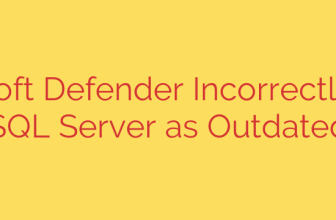
The “Sing-Along” Malware: How a Deceptive Email Lure Leads to a Major Security Breach
In the ever-evolving landscape of cybersecurity threats, attackers are constantly devising new ways to bypass our defenses. The latest tactic preys on our sense of community and corporate culture: a malicious campaign disguised as an invitation to a “corporate sing-along.” This seemingly harmless email is, in fact, a sophisticated trap designed to install a dangerous piece of malware on your system, granting attackers complete control.
This new threat highlights the critical importance of digital vigilance. What appears to be a friendly message can be the gateway to a significant data breach, compromising both personal and corporate security.
Deconstructing the “Sing-Along” Attack
The attack begins with a carefully crafted phishing email. This email might appear to come from a legitimate source, such as your company’s HR department or a fellow colleague, making it more likely to be trusted. The message is simple and enticing: it invites you to view a fun, team-building “sing-along” video.
Here’s the step-by-step breakdown of the infection process:
- The Bait: An employee receives an email containing a link to the supposed video. The subject line and body of the message are designed to lower suspicion and encourage a click.
- The Redirect: When the link is clicked, the user is not taken to a video platform like YouTube. Instead, they are directed to a malicious website controlled by the attackers.
- The Payload: The website prompts the user to download a file to view the video. This download might be disguised as a special video player, a required software update, or the video file itself.
- The Infection: The downloaded file is not a harmless media player—it’s the installer for a potent type of malware known as a Remote Access Trojan (RAT). Once the user runs the file, the malware is installed silently in the background.
The Hidden Danger: What is a Remote Access Trojan (RAT)?
A Remote Access Trojan is one of the most invasive forms of malware. It’s not just a virus that corrupts files; it’s a tool that provides a cybercriminal with complete and covert remote control over the infected computer. Think of it as handing an invisible intruder the keys to your entire digital life. They can see what you see, type what you type, and access everything stored on your machine and connected networks.
Once a RAT is installed, the attacker has a persistent backdoor into your system, allowing them to carry out a wide range of malicious activities without your knowledge.
The Devastating Capabilities of a RAT Infection
The “Sing-Along” malware campaign is particularly dangerous because of what the installed RAT allows attackers to do. The potential for damage is immense and includes:
- Data and Credential Theft: The malware can include a keylogger, which records every keystroke you make. This allows attackers to steal login credentials for bank accounts, email, corporate networks, and social media.
- Financial Fraud: With access to your financial information and passwords, criminals can drain bank accounts, make fraudulent purchases, or apply for credit in your name.
- Espionage and Surveillance: Attackers can remotely activate your computer’s webcam and microphone to spy on private conversations, business meetings, and your personal environment.
- File Exfiltration: The RAT gives intruders the ability to browse, copy, and steal any file on your computer. This includes sensitive corporate documents, intellectual property, client lists, and personal photos.
- Launching Further Attacks: The compromised computer can be used as a pivot point to spread the malware across the corporate network, infecting other systems and escalating the breach.
Actionable Security Tips to Protect Yourself
While this threat is sophisticated, you can defend against it with proactive security practices. Protecting your data starts with recognizing the signs of a phishing attack and building strong digital habits.
1. Treat All Unsolicited Emails with Suspicion
Even if an email appears to be from a trusted source, be cautious of unexpected requests or links. If a message seems unusual, verify it through a separate communication channel, like a phone call or a direct message.
2. Hover Before You Click
Always hover your mouse cursor over any link before clicking it. This will reveal the true destination URL at the bottom of your browser or email client. If the URL looks suspicious or doesn’t match the expected website, do not click it.
3. Maintain Updated Security Software
Ensure you have a reputable antivirus and antimalware program installed and that it is always up to date. These tools can often detect and block malicious files before they can cause harm.
4. Enable Multi-Factor Authentication (MFA)
MFA is one of the most effective security measures you can implement. It requires a second form of verification in addition to your password, making it much harder for attackers to gain access to your accounts even if they steal your credentials.
5. Foster a Culture of Security Awareness
For businesses, the best defense is an educated workforce. Conduct regular training to teach employees how to identify phishing attempts and what to do when they encounter a suspicious email. An alert employee can stop an attack before it even starts.
Ultimately, the “Sing-Along” malware is a stark reminder that cybercriminals are masters of social engineering. By staying vigilant and adopting a security-first mindset, you can avoid falling victim to their deceptive tunes.
Source: https://blog.talosintelligence.com/newsletter-computer-console-sing-along/








